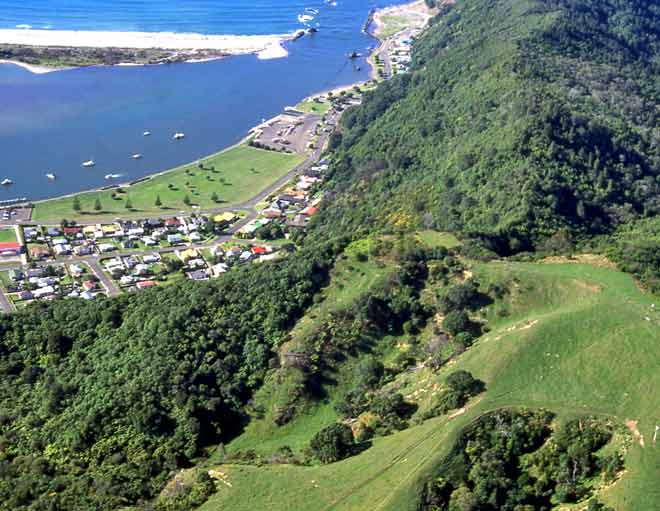

public profile

Toi (also known as Toikairakau (Toi, the wood eater) and Toitehuatahi (Toi, the only son)) was one of the earliest Polynesian immigrants to these shores. Toi left Rarotonga in a large canoe with many of his followers, in search of his grandson Whatonga (Possibly great grandson as he is grandson of Toi's son Ruarangi-tane and his son of Rauru) who was lost at sea when a storm struck the sailing regatta that he was involved in (he was engaged in a canoe race and when he with the other canoes were returning to land, after the race, a fierce wind arose from the direction of the land and many of the canoes including that containing Whatonga, were blown away to sea. Whatonga eventually arrived in Aotearoa and meanwhile Toi set sail upon the ocean of Kiwa in an effort to trace his grandson whom he thought must have been blown to the land discovered by the great Polynesian navigator Kupe.). He tracked Whatonga from Raiatea (Society Is.) across to Rarotonga and down to Aotearoa. Arriving at Whakatane (which was back then known as Kakahoroa), he found Te Hapuoneone people living in this area who informed him that Whatonga had been here but had just left to go back to his family. Toi stayed and married into the local people. The descendants of him are known as Te Tini o Toi (the multitudes of Toi). They became the dominant people of the North Island until further Polynesians arrived and upset their positions. Because of Tois widespread travels, and such was his fertility, that today nearly all tribes can link back to him. Toi is credited with the knowledge of pa building, new techniques of house construction and the important skill of cultivation.
"Who was Toi? Toitehuatahi (Toi the lone born) is an important early ancestor of Māori people. In some traditions he comes from Hawaiki, while in others he is indigenous to New Zealand. All, however, speak of his authority and prestige. A tribe known as Te Tini o Toi (Toi’s multitudes) are said to have inhabited the land prior to the arrival of canoes such as Te Arawa, Tainui and Mataatua. Early peoples such as this are often referred to as the tangata whenua – the people of the land. Their tenure and prestige is recognised in the traditions of the later Polynesian peoples.
Stories of Toi As with many important early ancestors, there are various stories about Toi. Particularly well known is the tale in which Toi, of Hawaiki, eats the dog of Uenuku. Another version has Toi as the consumer of trees or forest food, which is the meaning of his name Toikairākau. Some tribes place Toi on the North Island’s East Coast, while Hauraki peoples say he lived at Whitianga on the Coromandel Peninsula.
Whakatāne place names Perhaps the greatest number of traditions about Toi can be found with the Mataatua peoples, particularly Ngāti Awa of the Whakatāne district. Here there are numerous place names and places associated with Toi, the most famous being the pā called Kaputerangi, the home of Toitehuatahi. Located above the present-day Whakatāne township, the pā affords a magnificent view of Te Moana-a-Toitehuatahi (the sea of Toitehuatahi) in the Bay of Plenty. Another place name is Te Puku-o-te-wheke (the centre of the octopus), just west of Whakatāne. The tentacles of the octopus symbolise the sphere of Toi’s influence, and its centre indicates his home.
"Toi’s pā, Kaputerangi
Overlooking Whakatāne, Toi's pā, Kaputerangi, is one of the oldest known pā sites in New Zealand. The pā site is the small patch of grass surrounded by bush in the centre of this view." (Royal, 2005).
Toi and Ngāi Tūhoe The stories of Toi are used in later traditions about the celebrated Tūhoe, ancestor of the Ngāi Tūhoe people. Tūhoe enjoys mana through being a descendant of Toi and Pōtiki (another early ancestor) and later ancestors of the Mataatua peoples. This is commemorated in the Ngāi Tūhoe saying:
Nā Toi rāua ko Pōtiki te whenua, nā Tūhoe te mana me te rangatiratanga. The land belongs to Toi and Pōtiki, the prestige and chieftainship belongs to Tūhoe." (Royal, 2005).
Note
There exists numerous traditions regarding Toi's origin by Te Tini o Toi (the multitudes of Toi), his descendants.
These traditions are across a spectrum from purely human, legendary, semi-supernatural, and cosmological.
Work in progress... 1 x Winds, 3 x Māui-tikitiki-a-taranga of varying generations, 1x Te Ahunga, and even Eurocentric mythic re-interpretations, or new histories by conflation, bias, or fabrication etc.
Sources
Downes, T. W. (1915). Old Whanganui., 10-11. W. A. Parkinson & Co. Ltd.
Hongi, H. (1898, February 15). Tatai whakapapa Maori. Jubilee: Te Tiupiri [Volume 1, issue 7].
https://paperspast.natlib.govt.nz/newspapers/JUBIL18980215.2.4?item...
Pomare, Sir M. W. P. N. (n..d.). Legends of the Maori [Volume 2]. Southern Reprints.
https://nzetc.victoria.ac.nz/tm/scholarly/tei-Pom02Lege-t1-body-d1-...
Rangitāne o Wairarapa and Rangitāne o Tamaki Nui-ā-Rua., The Trustees of the Rangitāne Tū Mai Rā Trust., & The Crown. (2016, August 6). Deed of settlement of historical claims [Deed]. New Zealand Government.
https://www.govt.nz/assets/Documents/OTS/Rangitane-o-Wairarapa-and-...
Royal, Te A. C. (2005, February 8). First peoples in Māori tradition: Toitehuatahi. Te Ara - the Encyclopedia of New Zealand.
https://teara.govt.nz/en/first-peoples-in-maori-tradition/page-7
Shortland, E. (1882). Maori religion and mythology. Longmans, Green, and Co. .
https://en.m.wikisource.org/wiki/Maori_Religion_and_Mythology
Tregear, E. (1891). Maori-Polynesian Comparative Dictionary: Maori Genealogies [Uriwera tribe]. Lyon and Blair.
https://nzetc.victoria.ac.nz/tm/scholarly/tei-TreMaor-b4-2-2.html
| 1033 |
1033
|
||
|
1033
|
|||
| ???? | |||
| ???? | |||
| ???? | |||
| ???? | |||
| ???? |
Hawaiki
|
||
| ???? |